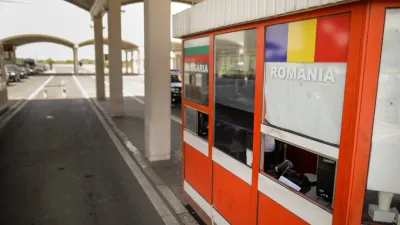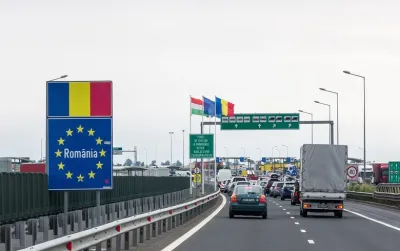

The border between Bulgaria and Romania symbolizes the deep cultural and historical bonds shared by these two nations. This frontier serves as a crucial link for tourism, trade, and regional integration, fostering vibrant exchanges across the region. In this article, we explore this connection in detail, offering insights into the main road crossings and essential information about this dynamic border.
Historical Background
Through the ages, political shifts have influenced border crossings between Bulgaria and Romania. From the fall of the Ottoman Empire to the establishment of present-day states, these changes have shaped today’s boundary. Both nations have invested significantly in securing and enhancing this border to ensure smooth transit and strengthen bilateral relations. Now, an atmosphere of cooperation prevails, benefiting both countries and everyone who crosses this well-traveled boundary.
There are eight border crossing points connecting Bulgaria and Romania, with four of these serving as road crossings that are essential gateways for trade, tourism, and transport. If you're planning to cross the border, it’s wise to check a border crossing webcam before your journey. Remember, a EVignette Bulgaria is required to use the motorways in Bulgaria. Learn more about this requirement through our portal. Below, we explore each of these crossing points, detailing their locations and the routes to reach them.
Ruse-Giurgiu
The Ruse-Giurgiu crossing is the busiest of the road border points, connecting the city of Ruse in Bulgaria with Giurgiu in Romania over the Danube River. Both sides of the crossing follow the E85, a major route within the European Union, making it a vital passage for international trade and regional transit.
Vidin-Calafat
Situated to the west, this crossing spans the Danube, linking Vidin, Bulgaria, with Calafat, Romania. The Bulgarian side connects via Route 11, while Romania’s side is served by the DN56. This border point is crucial for both road and rail transport along the European Transport Corridor. Additionally, Vidin’s proximity to the Serbian-Bulgarian border makes it popular for travelers from Serbia heading to Romania. Note that Serbian-Bulgarian border crossings may have stricter regulations than the Bulgarian-Romanian crossings. For more information, explore our section on Serbia-Bulgaria border crossings.
Silistra-Călărași
Located in the northeastern part of the border, the Silistra-Călărași crossing connects the cities of Silistra in Bulgaria and Călărași in Romania. This point plays a significant role in trade, commerce, and economic cooperation between the two countries. Access from Bulgaria is via Route 7, while the Romanian side is served by the DN21.
Kardam-Negru Voda
In the northeastern region, this border point connects the villages of Kardam in Bulgaria and Negru Voda in Romania. Though smaller than other crossings, it is essential for local connectivity and movement between communities. It’s accessible via Road III-209 on the Bulgarian side and DJ225D on the Romanian side.

Aside from the main road crossings, there are four other border points that cater primarily to pedestrians and cyclists:
- Vama Veche (Bulgaria) - Durankulak (Romania): Located along the Black Sea coast, this crossing serves pedestrians and cyclists moving between the two coastal villages.
- Negru Voda (Bulgaria) - Dobromir (Romania): In the far northeast of the border, this crossing connects the villages of Negru Voda and Dobromir for pedestrian and cyclist access.
- Ostrov (Bulgaria) - Ostrov (Romania): This crossing lies in the town of Ostrov, which spans the border. Known as DJ222 in Bulgaria, this route primarily supports pedestrians and cyclists.
- Bechet-Oryahovo: A ferry crossing over the Danube River that links Bechet in Bulgaria with Oryahovo in Romania. The Bulgarian ferry terminal is accessible via Road 12, and in Romania, the crossing is approached by the DN56B. This crossing accommodates both vehicles and pedestrians.
Detailed Map of Border Crossings
Explore our detailed map for a comprehensive view of the border crossing points between Bulgaria and Romania, highlighting each route for easier navigation.

With both Bulgaria and Romania being members of the European Union, their citizens enjoy seamless, unrestricted movement within the EU. This ease of travel is largely facilitated by both countries’ adherence to the Schengen Agreement. For non-EU travelers, visa and documentation requirements vary based on nationality and must be followed accordingly. Border crossings are generally smooth, with customs processes designed to expedite the flow of goods, thereby boosting trade and fostering commerce.
Trade and Economic Implications
The border crossings between Bulgaria and Romania serve as a vital link, significantly boosting trade and economic collaboration. Over the years, the steady increase in goods transported across this border has fueled economic growth, fostering business expansion and enhancing regional integration. Swift, efficient goods transit strengthens economic ties and accelerates development, positioning the region as a strategic commercial hub.
Tourism and Cultural Exchanges
Beyond economic benefits, the border crossings facilitate tourism, allowing travelers to easily explore the diverse attractions of both countries. Bulgaria and Romania boast rich histories, offering visitors a blend of historical sites, natural beauty, and cultural landmarks. Seasonal festivals and cultural events highlight the close connections between the two nations, and cross-border tourism initiatives actively promote shared heritage and cultural exchange, enriching the tourism sector for mutual benefit.
Challenges and Future Developments
While advancements have been made, certain challenges at the border remain. Bureaucratic procedures and infrastructure limitations occasionally hinder the smooth passage of goods and people. In response, ongoing projects aim to modernize and digitize border operations, upgrade infrastructure, and encourage collaboration among authorities and stakeholders. These initiatives are critical in ensuring an efficient, responsive border experience.
Uniting Europe by Road
The European Transport Corridor IV embodies the EU’s commitment to regional development, drawing investment for border infrastructure improvements that benefit businesses and communities alike. As traffic volumes increase, the need for enhanced connectivity and modern facilities becomes more pressing. Plans for new roads and upgraded facilities are on the horizon, promising to ease the anticipated growth in cross-border movement and contribute to the region’s resilience.
Danube Bridge Toll – Cars Entering from Romania
With the introduction of digital technologies and automated border control, crossing the border is set to become even faster and more convenient. These innovations aim to minimize waiting times and streamline transit, ultimately benefiting trade and business growth. The automation of customs processes is expected to simplify logistics, making cross-border commerce more accessible and efficient.
Exchanging Goods (and Goodwill)
On the tourism front, collaborative projects are expanding, focusing on cross-border cultural exchanges and initiatives that celebrate the region’s diverse attractions. These efforts are dedicated to sustainable tourism, ensuring long-term economic gains for both countries.
Although challenges like funding, environmental sustainability, and stakeholder coordination remain, the positive relations between Bulgaria and Romania, along with EU support, create an optimistic outlook. By addressing these challenges, the border region can maintain its appeal, offering a vibrant and attractive destination for visitors from near and far.
